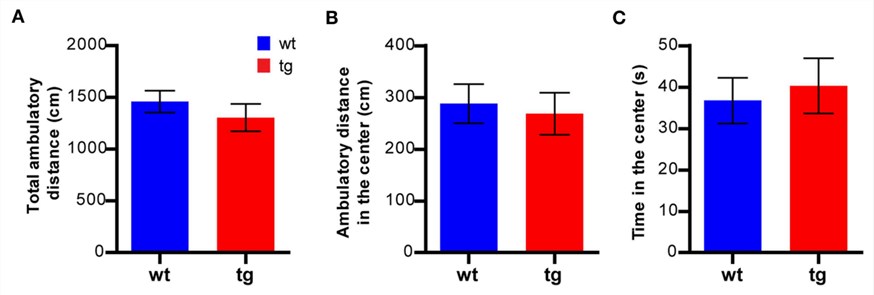Open Field Test
Motor function of rodent models can be assessed with different behavioral tests and each of them evaluates changes in different aspects of the motor function. Here, Creative Biolabs conducts the open field test to analyze locomotor activity and anxiety-like behavior in a mouse or rat model.
Introduction of Open Field Test
Developed by Calvin S. Hall, the open filed test provides a useful method to simultaneously measure the exploratory behavior, total locomotor activity levels, and anxiety-like behavior in rodents. The test is based on the tendency of the animal to explore the novel area and avoid bright light. When animals are placed into the open field apparatus for the first time, they tend to remain near the walls, displaying a natural aversion to brightly lit areas. However, they also have the drive to explore a perceived threatening stimulus. The result of these two conflicting drives is anxiety. Increased exploratory behavior or locomotion in the center of arena indicates low anxiety, whereas preference for residing near walls and decreased locomotion/exploratory behavior indicate a high level of anxiety in animals.
Open Field Apparatus
The open field is usually an enclosed space, which may be square, rectangular, or circular in shape with surrounding walls that prevent the animal from escaping. One of the walls is clear Plexiglas, so mice could be visible in the apparatus. Commonly, the field is marked with a grid and square crossings. The center of the field is marked with a different color to differentiate from the other squares. The measures of the number of squares crossed can be obtained manually or with an automated camera-based computer tracking system fixed to the ceiling.
Behavior Assessments
- Line crossing: Rate with which the animals cross a grid line with all four paws.
- Central square duration: Total duration of time for which animal spent in the central square.
- Rearing: Number of times the animals stood on their hind legs. This behavior indicates increased exploratory behavior.
- Stretch attend postures: Number of times the animal showed forward elongation of the head and forelimbs and then pulling back to the original position. High frequency indicates high levels of anxiety.
- Grooming: Duration of time the animal spent licking or scratching his body while motionless.
- Freezing: Duration of time for which the animal remains completely stationary.
- Defecation & Urination: Number of fecal boli produced and number of puddles or streaks of urine, respectively. This measurement is controversial.
 Fig.1 A reduction in the immature, adult-born tate granule cells (DGC) population does not affect anxiety-like behavior in the open field test. (Deng et al. 2015)1, 2
Fig.1 A reduction in the immature, adult-born tate granule cells (DGC) population does not affect anxiety-like behavior in the open field test. (Deng et al. 2015)1, 2
Creative Biolabs also conducts other behavioral tests for motor function assessment:
Creative Biolabs provides highly customized behavioral tests to suit specific scientific needs. Moreover, new behavioral tests of motor function are being developed and validated.
Of note, as an undisputed specialist in neurological disease drug development, Creative Biolabs has an extensive range of rodent neurological disease models for drug efficacy studies:
For more information, please contact us or send us an inquiry.
References
- Deng, W.; Gage, F. H. The effect of immature adult-born dentate granule cells on hyponeophagial behavior is related to their roles in learning and memory[J]. Frontiers in Systems Neuroscience. 2015, 9(9):34.
- under Open Access license CC BY 4.0, without modification.
For Research Use Only.
